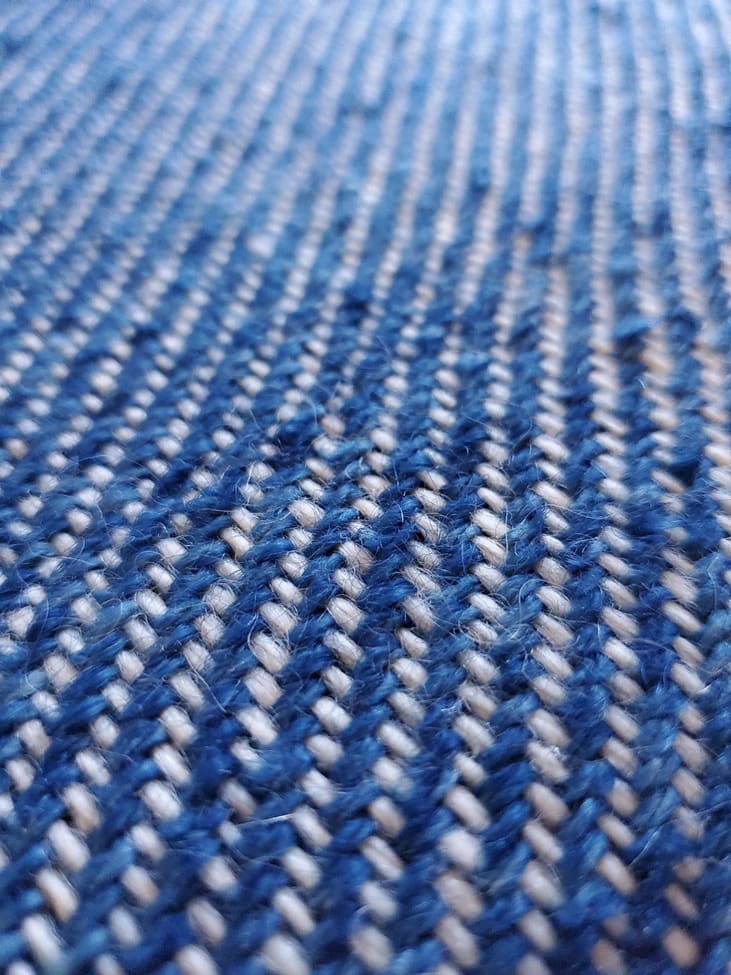Lambing season is a sign of a busy time to come in the Weaving, Spinning, and Dyeing shop. We will receive wool from our Coach and Livestock Department that has been shorn from our lambs. The lambs receive their first haircut before their first winter to help them put on weight and grow faster. We covet this wool because it is the softest that sheep ever produce. We know it is lamb’s wool when we receive it because it has a tight corkscrew on the end of each lock, having never before been cut. The lambs are born with this distinctive curl but lose it as soon as they are shorn.
Once we have the wool, it must first be washed to remove all the vegetable matter picked up in field and trapped in the locks. Washing involves using a strong detergent and hot water, fluffing the locks, and gently placing them into the hot water. We need to be careful not to agitate the wool too much because both heat and agitation can contribute to felting the wool. Felting is an irreversible process where the wool fibers stick together, creating one piece. While sometimes felting is done on purpose, we take great care to avoid this process. Once the locks have had sufficient time to rest in their hot soapy water, they are removed, rinsed, and left out in the sun to dry. The locks are now ready for the long journey to becoming a finished fabric.

he next step is to card the locks, separating all the fibers into a fluffy mass of uniformly spread-out fiber called a batt. This batt can be manipulated by the spinner’s hands to form a continuous length of yarn. To do so, the batt is attached to the spinning wheel by overlapping it with the yarn that has already been spun or the lead string on the bobbin. Twist is generated by the wheel, then managed as it travels into the batt. At this point, the spinner must control where the twist goes and how much fiber it is allowed to interact with. During this process, the spinner controls the thickness of the yarn. Once enough yarn has been made, it can be moved to the loom.

At the loom, the yarn can be stretched vertically to form the warp or passed back and forth through different layers of the warp in what is called the weft. Each individual warp yarn is assigned a place in the fabric and programmed in the loom to raise or lower with another specific group of warp yarns. These layers separate to form an opening between them called the shed. Each additional weft yarn must go through a new shed to lock the previous weft yarn in place. This process can be repeated over and over in unique arrangements to build designs or textures in the fabric. However, it will always be these two pieces, warp and weft, interacting and interlocking with each other to make one unified textile.

Though complicated and time consuming, this process of weaving fabrics was in integral part of life in the eighteenth century. The livelihood of a weaver may well depend on the lambs born every spring and on the people who ensure that a thick warm fleece is shorn from those lambs when the time has come. So please, enjoy the lambs. You may see a frolicking sign of spring, but the weaver sees a fuzzy blanket and job security.
Joe Wixted has worked for Colonial Williamsburg for 6 years, first leading school groups, then leaving and coming back to Colonial Williamsburg as an Apprentice Weaver. He enjoys being able to research and reproduce historic fabrics that have been lost to history while at work. When he is not at work Joe loves camping and hiking in his free time.
Colonial Williamsburg is the largest living history museum in the world. Witness history brought to life on the charming streets of the colonial capital and explore our newly expanded and updated Art Museums of Colonial Williamsburg, featuring the nation’s premier folk art collection, plus the best in British and American fine and decorative arts from 1670–1840. Check out sales and special offers and our Official Colonial Williamsburg Hotels to plan your visit.
